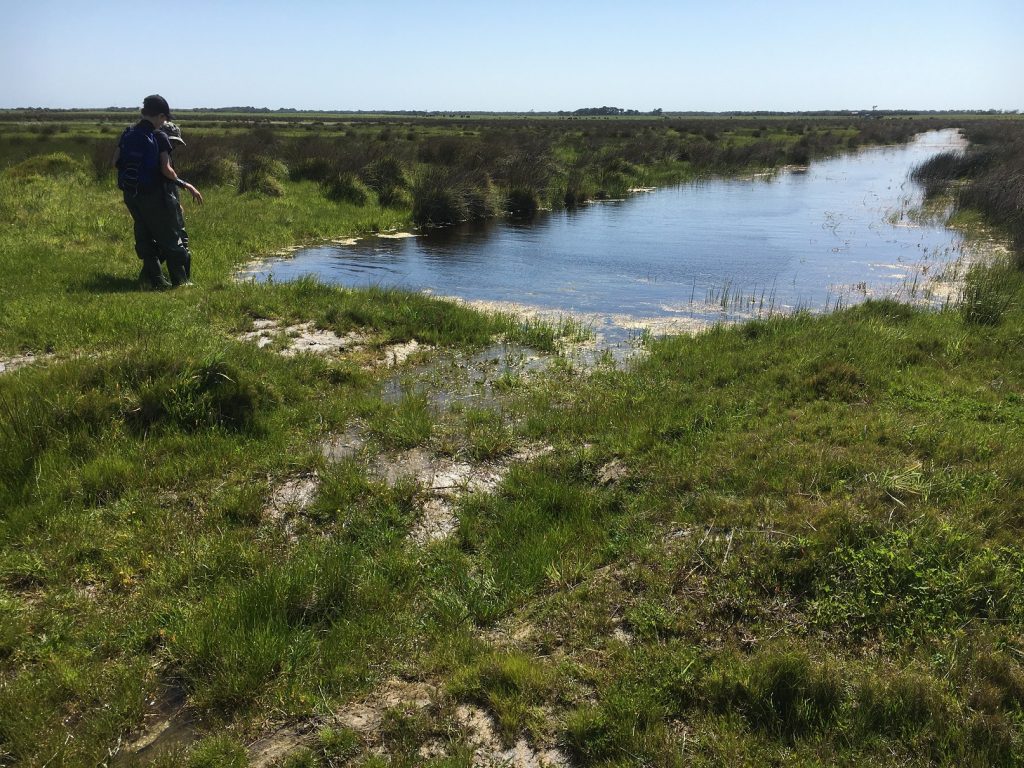NGT’s Hutt Bay wetland is full!
Despite winter having some long dry spells, good autumn and spring rainfall in 2020 has filled Hutt Bay Wetland, NGT’s coastal reserve located a short drive west of Port MacDonnell. By full, we don’t mean to historic, pre-drainage levels, but to the level set by hydrological restoration works undertaken prior to NGT ownership (as explained in this previous blog). Prior to colonisation and development, Hutt Bay Wetland was a landlocked wetland that formed part of a much wider coastal wetland complex to the west, separated from the ocean by coastal dunes, and would not have overflowed to the sea in this section of the coast.
The image below, taken on 2nd October 2020, shows the main active outlet drain through the wetland, excavated last century, that today carries water to sea. An earthen weir, protected by geofabric, was constructed across this drain about 10 years ago under the supervision of the late Steve Clarke, and is visible in the foreground of the image – it has now mostly grassed over. On our visit, flows were trickling over this weir, indicating that the wetland was indeed full to its partially restored level. Without this structure, Hutt Bay Wetland would currently by much shallower and would dry much earlier in summer.

At this water level, Hutt Bay Wetland still forms an extensive, continuous waterbody from it’s western (deepest) end (on a neighboring property) through to almost its eastern end on NGT’s Reserve. The image below, taken from a high point in the coastal dunes, gives a sense of the scale and the diversity of habitats provided at Hutt Bay.

The variation in depth creates a variety of seasonal aquatic habitats, a couple of which are shown in the images below.

As you might imagine, with all this water around there is plenty of waterbird activity. A pair of Brolga is regularly seen at Hutt Bay and both birds were observed on our visit. This pair may breed here, as they have been observed over a number of years, but that is yet to be confirmed. Violent splashing indicated the presence of male Musk Ducks, defending their territories and displaying to females.
There were also scores of Pied Stilt and Whiskered Tern. We saw a small flock of early season shorebirds, probably Sharp-tailed Sandpipers, looking for some shallow water to feed in. As water levels drop over summer both the abundance and diversity of waterbirds are likely to increase, as greater habitat diversity develops (with more shallow habitat for waders) and wetland habitat dries elsewhere, concentrating waterbirds into important summer refuges such as Hutt Bay Wetland.
